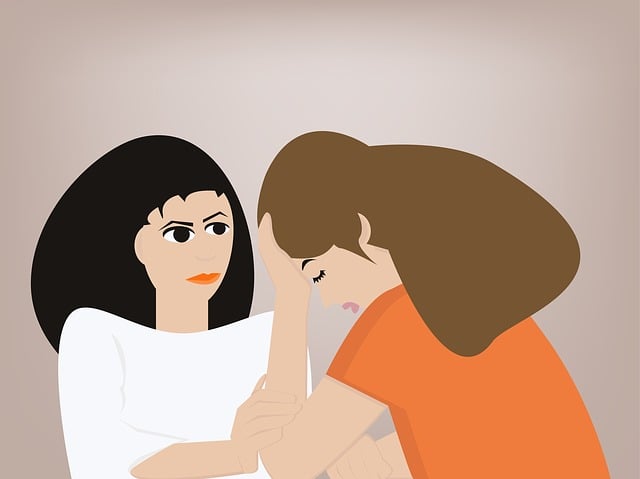Youth anxiety treatment is evolving rapidly, driven by gaps in existing methods and the unique pressures of modern life. Traditional approaches like CBT often fail to address academic, social media, and peer dynamics. Innovative solutions include digital therapy platforms, mobile apps, Prolonged Exposure (PE) therapy, and VR-integrated CBT, offering personalized, engaging, and accessible options for teens. Emerging technologies and personalized medicine tailor treatments to individual needs, reducing barriers to care and enhancing outcomes. Digital health solutions, in particular, revolutionize youth anxiety treatment by providing scalable, discreet, and appealing options via mobile apps and virtual reality.
The landscape of adolescent anxiety therapy is evolving rapidly, driven by a growing understanding of youth mental health challenges and advances in care. This article explores current gaps in treatments for adolescent anxiety, highlighting emerging therapies that offer new hope. We delve into digital health solutions revolutionizing mental care access for teenagers and discuss the potential of personalized medicine to tailor anxiety management strategies. By examining these innovative approaches, we aim to illuminate the future of youth anxiety treatment.
Understanding Adolescent Anxiety: Current Challenges and Gaps in Treatment
Adolescent anxiety is a growing concern, with many challenges and gaps persisting in current treatment approaches. While traditional therapy methods like cognitive-behavioural therapy (CBT) have shown effectiveness, they often fail to fully address the complex nature of youth anxiety. Adolescents face unique pressures from academic expectations, social media, and peer dynamics, contributing to elevated stress levels and anxiety disorders. The current landscape of youth anxiety treatment is limited by a lack of personalized interventions tailored to individual needs, especially considering comorbidities like depression or substance abuse.
Additionally, access to quality mental health care remains disparate, with many adolescents from underserved communities facing barriers such as cost, stigma, and a shortage of specialized therapists. This highlights the pressing need for innovative approaches that are both accessible and culturally sensitive. Incorporating technology, such as digital therapy platforms and mobile apps, could expand reach and improve engagement, but further research is needed to ensure their efficacy and safety in adolescent populations.
Emerging Therapies: Innovative Approaches for Youth Anxiety Treatment
Emerging therapies are revolutionizing youth anxiety treatment, offering novel and effective strategies to support adolescents navigating mental health challenges. One promising approach is Prolonged Exposure (PE) therapy, which helps young individuals confront and process anxious thoughts and experiences in a safe environment. By gradually and repetitively exposing them to anxiety-provoking stimuli, PE enables adolescents to reduce avoidance behaviors and gain better control over their anxiety responses.
Another innovative method is Cognitive Behavioral Therapy (CBT) integrated with technology, such as virtual reality (VR). VR allows therapists to create immersive simulations tailored to each adolescent’s specific fears, providing a controlled setting for them to practice coping skills. This technology-driven approach not only enhances engagement but also offers a flexible and accessible way to deliver therapy, making youth anxiety treatment more accessible and appealing to today’s digital-native youth.
Digital Health Solutions: Revolutionizing Mental Care for Teenagers
In today’s digital era, the landscape of mental health care for teenagers is undergoing a significant transformation with the advent of Digital Health Solutions. These innovative tools and platforms offer accessible and engaging youth anxiety treatment options that cater to the unique needs and preferences of adolescents. From mobile apps designed to track mood and emotions to virtual reality therapy sessions, digital health solutions are revolutionizing how we approach mental well-being among teens.
By leveraging technology, these solutions provide a more personalized and discreet way for teenagers to access support. Interactive features, such as gamified exercises and peer support communities, can enhance engagement and make youth anxiety treatment more appealing. Additionally, digital platforms offer scalability and accessibility, enabling professionals to reach a broader audience and deliver care from the comfort of home, thereby reducing barriers to receiving therapy.
Personalized Medicine and the Future of Anxiety Management in Adolescents
Personalized medicine is poised to revolutionize youth anxiety treatment, offering a promising future for adolescent mental health care. By tailoring treatments to individual genetic profiles and unique aspects of each teenager’s experience, therapists can provide more effective interventions. This approach goes beyond one-size-fits-all strategies, acknowledging that anxiety disorders manifest differently in various individuals. With advancements in neuroscience and genetic testing, professionals can now identify specific biological markers associated with anxiety, enabling them to design targeted therapies.
For instance, personalized medicine might involve prescribing specific medications based on a youth’s genetic makeup or offering customized cognitive-behavioral therapy (CBT) protocols that address their particular fears and triggers. This precision in treatment planning has the potential to significantly improve outcomes, reduce symptoms, and enhance overall well-being for adolescents struggling with anxiety disorders.
The future of adolescent anxiety therapy looks promising, with emerging therapies, digital health solutions, and personalized medicine paving the way for more effective and accessible youth anxiety treatment. By leveraging innovative approaches, digital tools, and tailored interventions, mental health care can better address the unique needs of teenagers struggling with anxiety. These advancements hold significant potential to revolutionize support systems, improve outcomes, and enhance overall well-being for young individuals.
